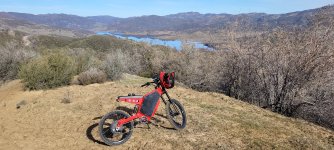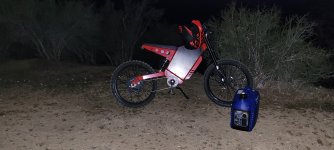igashosparks
10 mW
- Joined
- Jan 6, 2023
- Messages
- 25
I just received my Stealth Bomber Clone from an outfit in China called Coolfly Bikes.
8000W QSMotor
SVMC72V100(M) Sabvoton sinewave controller
72V 41.6AH(China Battery)
On the trial run, going about 35MPH / 56 KPH, after riding for about 20 minutes.. all power died to the bike, display went dark after posting a 30H error code. After some initial troubleshooting, I saw that the fuse had blown on the outbound battery positive lead (between the battery and controller).
The response from the supplier is to replace the fuse.. I'm guessing about 120 Amps? My question back to the supplier was why did the fuse blow in the first place. (still waiting for the response, so I got up the courage to post the situation here, I'm pretty new to this.. and do not have a lot of electrical experience)
I was concerned that the controller at 100Amps is under spec'd, and I should have at least a 150Amp.. The supplier assures me, that the controller is not under spec'd.
Any advice, feedback, suggestions are most welcome. Thank you to any responses!
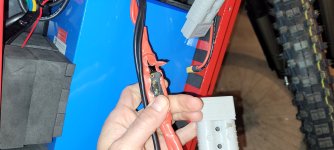
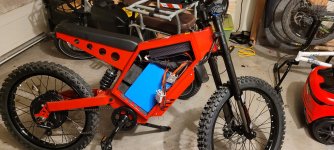
8000W QSMotor
SVMC72V100(M) Sabvoton sinewave controller
72V 41.6AH(China Battery)
On the trial run, going about 35MPH / 56 KPH, after riding for about 20 minutes.. all power died to the bike, display went dark after posting a 30H error code. After some initial troubleshooting, I saw that the fuse had blown on the outbound battery positive lead (between the battery and controller).
The response from the supplier is to replace the fuse.. I'm guessing about 120 Amps? My question back to the supplier was why did the fuse blow in the first place. (still waiting for the response, so I got up the courage to post the situation here, I'm pretty new to this.. and do not have a lot of electrical experience)
I was concerned that the controller at 100Amps is under spec'd, and I should have at least a 150Amp.. The supplier assures me, that the controller is not under spec'd.
Any advice, feedback, suggestions are most welcome. Thank you to any responses!




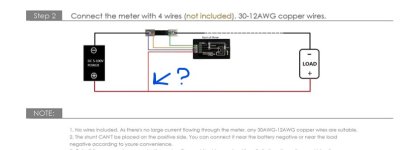

![61MOLfi2AmL._SL1500_[1].jpg](/sphere/data/attachments/190/190376-1f5d1614bf5e58782f22dcc2b42caf9a.jpg)

